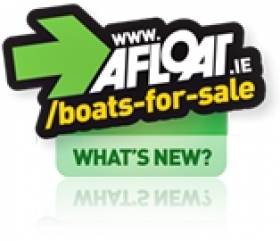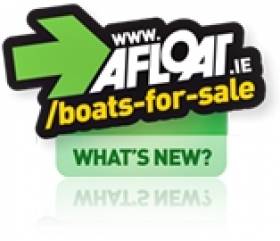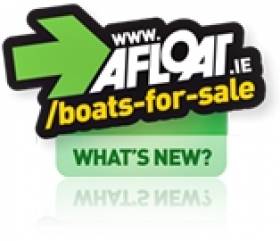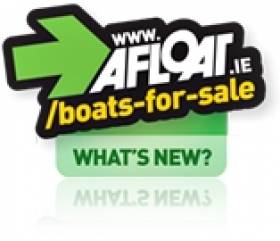Displaying items by tag: sailing cruisers
#afloatboatsforsale – As the Euro continues its dip, UK boat buyers can eye the Irish boat market as if it's staging a giant 15 percent off sale!
There's bargains for our neighbours and Afloat's bustling boats for sale with 400 boats for sale shows the very latest in this value, right at the start of the 2015 boating season!
With the European economy slogging along at a near standstill, the euro has slid to a nine year low offering boat bargains to UK consumers and anyone else paying in sterling.
The outlook for the euro against the pound sterling has improved slightly but at GBP/EUR 1.3888 it's hard to see when this might change.
In the meantime, potential UK buyers might want be tempted by these latest boat bargains. For example a Cork harbour based motor–sailer with a ketch rig at €56,000 has just come on the popular sailing cruisers section of Afloat boats for sale. The Rogger 36 is one of the last boats out of Stargate Marine and has been in present ownership since 1988. A 1991 Cornish Shrimper, a lifting keel gaff rigged sail boat, based in Waterford has also just been added at €14,000. A Dundalk based 1989 Dufour 39, a modern classic from the drawing board of German Frers, is on the market for €47,500. Click for 400 more boats for sale in Ireland.
West Cork Based MacGregor 26x Sailing Cruiser Goes On Sale
A West Cork based MacGregor 26x trailer sailer has gone on sale on the Afloat boats for sale website. It is the latest in series of modestly priced family cruisers that have been added to the site in recent weeks. The year 2000 model comes with a Yamaha 50 hp outboard,lightly used according to the private owner selling this boat. The sailing cruiser has been wintered ashore. It comes complete with roller furling jib, genoa and mainsail. The boat is antifouled with a road trailer and is priced at E1300. Full advert here.
West Cork Based MacGregor 26x Sailing Cruiser Goes On Sale
A West Cork based MacGregor 26x trailer sailer has gone on sale on the Afloat boats for sale site. The year 2000 model comes with a Yamaha 50 hp outboard,lightly used according to the private owner selling this boat. The sailing cruiser has been wintered ashore. It comes complete with roller furling jib, genoa and mainsail. The boat is antifouled with a road trailer and is priced at E1300
Two Starter Sailing Cruisers for Sale
Two modestly priced sailing cruisers have recently been added to Afloat's boats for sale website. One is for sale privately, the other is for sale through a County Cork broker. According to the advert the 1969 Westerly Centaur has a brand new Beta 25hp engine, shaft and prop. It was surveyed last month, is antifouled and ready to sail at her mooring in Cork Harbour. Described as a 'solid and safe' 26 ft bilge keeler, Masquerade was the ninth Centaur built by Westerly and was constructed under Lloyd's supervision. The certficate of construction as well as all documentation and owner history is available. The boat is for sale at EUR12,500 and is an Ideal family or starter boat. More details here
The other recently added boat for sale is a similarly sized 1987 Yamaha 25. The sailing cruiser is fitted with a Yanmar 8hp engine. It is for sale through broker Hugh Mockler of HM Yachts, a firm who have made strides in marketing yachts for sale through digital media such as afloat.ie, facebook and twitter. Mockler describes the Yamaha as a 'lovely clean boat that comes with its own 4 wheel road trailer and all working electronics'. 'It's a very nice starter boat with club racing potential', he adds. View the boat here.
Tips on buying a boat here and our full istings here.
































































